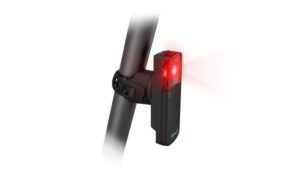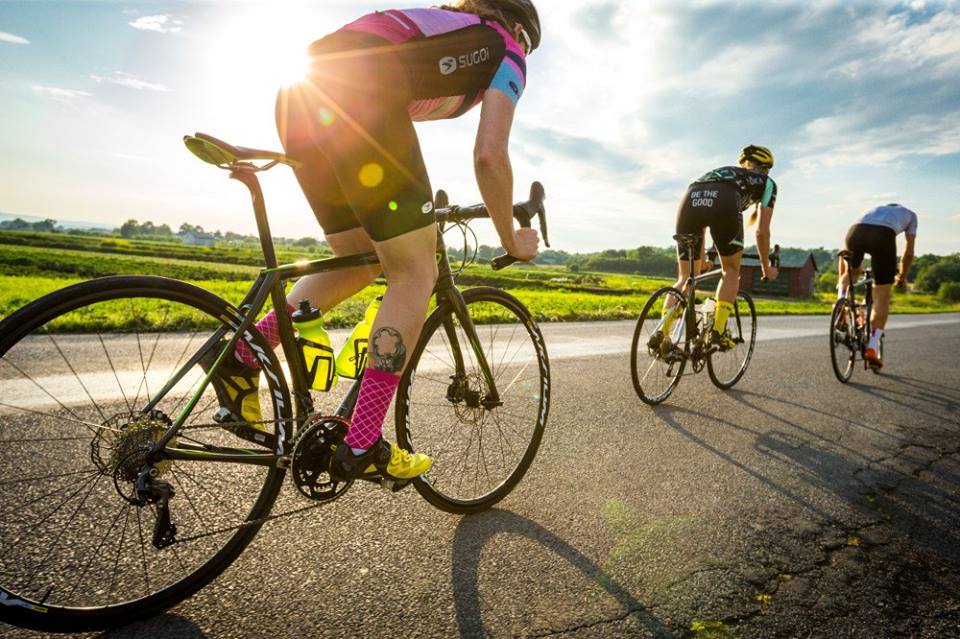Lights and bikes, innovations and advice; who is right?

Colleague Michela Dell’Amico, Journalist and videomaker, writes an article on a well-known blog entitled: “Bike, here is the best innovation to turn”. We read the article from top to bottom and since we cannot comment directly, we do so from this magazine of ours.
So the colleague writes (we report some excerpts of her text): “According to the Highway Code, anyone riding a bike is required to raise their arm to signal their intention to turn in that direction.
This is particularly important when turning left, which means moving with a light and almost invisible vehicle into the middle of the road, cut off on either side by much larger and faster vehicles. But despite the lights (mandatory in the dark but only in theory), a raised hand can easily go unnoticed […].
The answer to this problem is a prototype of a bike light (for any model of bike) integrated into a rear mudguard and supported by a front unit. It is an integrated system of intelligent lights that – among other things – automatically signals (thanks to special sensors) when the cyclist brakes or slows down pedaling, but above all signals, like the “indicator” of cars, the intention to turn.”
Here we at ridersbike.net comment because, according to the highway code, raising the arm means that the cyclist is stopping, while to turn left and or right you must move the arm in one of the two directions parallel to the ground. The phrase ‘for any model of bike’ is not true, as racing bikes, gravel bikes, cyclocross bikes, mountain bikes do not have mudguards, so this innovation will be fine for city bikes.
As for these bikes (those without mudguards (racing, mountain bikes), except those with disc brakes which have other solutions, the option is a small LED that is applied to the rear brake wire. When the cyclist brakes, the rear LED lights up and the car behind sees it and (should) slow down. It costs just over 10 euros, subject to latest price updates and is very useful.
For racing bikes, cross bikes, gravel bikes and mountain bikes, with disc brakes, Garmin has created a useful tool which is the radar. Obviously this tool is expensive, not within everyone’s reach, but for your own safety, in our opinion, you have to spend, like the helmet which, yes it is not mandatory, but should still be worn, therefore purchased, always for your own safety.
Garmin has also designed two rear lights to signal to the cars behind when you turn right and left. They are applied to the oblique stays of the rear frame and are controlled by an instrument that is mounted on the front handlebars. The cost is related to the fact of one’s safety… spending to invest in oneself, to be seen that one is on a two-wheeled vehicle, with lights that signal what we are doing.
Obviously in the cycling market there are other types of solutions, such as the backpack with the stop and the arrows, the helmet with rear lights, lights applicable to the frame or to the handlebar of the racing bike… in all these cases the question is: “Is it really necessary or is it a palliative for my safety?”.
However, without taking anything away from the article of the colleague who indicated an Italian inventor with a solution applicable to bikes equipped with a rear mudguard, we at ridersbike.net, knowing the sector very well, felt obliged to give our opinion, written above.
La collega Michela Dell’Amico, Giornalista e videomaker, scrive su un noto blog un articolo intitolando: “Bici, ecco la migliore innovazione per svoltare”. Ci siamo letti l’articolo da cima a fondo e non potendo commentare direttamente lo facciamo da questo nostro magazine. Dunque la collega scrive (riportiamo alcuni suoi stralci di testo): “Secondo il Codice della strada, chi guida una bici è tenuto ad alzare il braccio per segnalare l’intenzione di svoltare in quella direzione.
La cosa è particolarmente importante nella svolta a sinistra, che significa portarsi con un mezzo leggero e pressoché invisibile nel mezzo della carreggiata, tagliati ai lati da veicoli ben più grossi e veloci. Ma nonostante le luci (obbligatorie con il buio ma solo in teoria), una mano alzata può tranquillamente passare inosservata […].
La risposta a questo problema è un prototipo di luce per bici (per qualsiasi modello di bici) integrata in un parafango posteriore e coadiuvato da un’unità anteriore. E’ un sistema integrato di luci intelligenti che – tra l’altro – segnala automaticamente (grazie ad appositi sensori) quando il ciclista frena o rallenta la pedalata, ma soprattutto segnala, come “la freccia” delle auto, l’intenzione di svoltare.”
Qui commentiamo noi di ridersbike.net poiché, secondo il codice della strada, alzare il braccio vuol dire che il ciclista si sta fermando, mentre per svoltare a sinistra ed o a destra si deve muovere il braccio in uno dei due sensi parallelo al terreno. La frase ‘per qualsiasi modello di bici’ non è vero, in quanto le bici da corsa, le gravel le ciclocross, le mtb non hanno parafanghi, indi per cui questa innovazione andrà bene per le city bike.
Per quanto riguarda queste bici (quelle senza parafanghi (corsa, mtb), salvo quelle con i freni a disco che c’è altre soluzioni, la possibilità è un piccolo led che si applica al filo del freno posteriore. Quando il ciclista frena, il led posteriore si accede e l’auto dietro vede e (dovrebbe) rallentare. Costa poco più di 10 euro, salvo ultimi aggiornamenti di prezzo ed è molto utile.
Per le bici da corsa, le cross, le gravel e le mtb, con i freni a disco, la Garmin ha realizzato un utile strumento che è il radar. Ovviamente questo strumento è costoso, non a portata di tutte le tasche, ma per la propria sicurezza ,secondo noi, bisogna spendere, come il casco che, si vero non è obbligatorio, ma andrebbe comunque indossato, quindi acquistato ,sempre per la propria sicurezza.
La Garmin ha anche ideato due luci posteriori per segnalare alle auto dietro quando si svolta a destra e a sinistra. Si applicano ai foderi obliqui del telaio posteriore e si comandano da uno strumento che viene montato sul manubrio anteriore. Il costo è correlato al fatto della propria sicurezza…spendere per investire su se stessi, farsi vedere che si è su un mezzo a due ruote, con luci che segnalano cosa stiamo facendo.
Ovviamente nel mercato ciclistico vi sono altre tipologie di soluzioni, come lo zaino con lo stop e le frecce, il casco con luci posteriori, luci applicabili sul telaio o sulla piega della bici da corsa…in tutti questi casi vale la domanda:”Serve veramente od è un palliativo alla mia sicurezza?”.
Comunque, senza nulla togliere all’articolo della collega che ha indicato un inventore italiano con una soluzione applicabile alle bici munite di parafango posteriore, noi di ridersbike.net, conoscendo molto bene il settore, ci siamo sentiti in dovere nel dare una nostra opinione, sopra scritta.

















